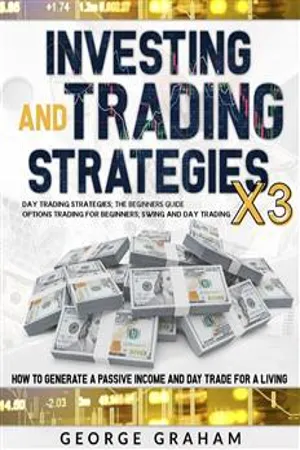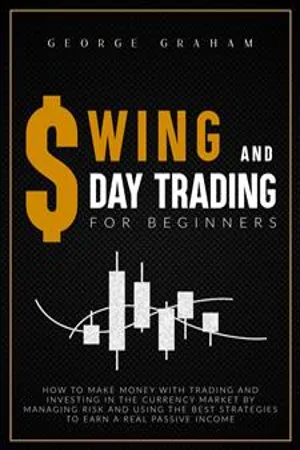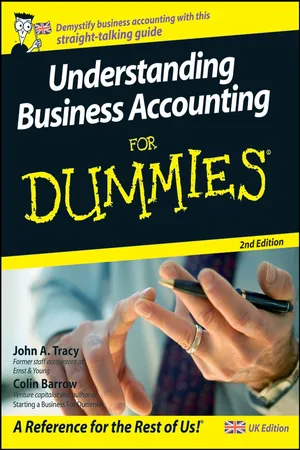Economics
Stocks
Stocks, also known as shares or equities, represent ownership in a company. When an individual or entity purchases stocks, they become a partial owner of the company and may benefit from its profits through dividends or by selling the stocks at a higher price. Stocks are traded on stock exchanges and their prices fluctuate based on supply and demand, as well as the company's performance.
Written by Perlego with AI-assistance
Related key terms
9 Key excerpts on "Stocks"
- eBook - ePub
Investing and trading strategies X3
Day Trading Strategies, Options Trading for Beginners, Swing and Day Trading
- George Graham(Author)
- 2023(Publication Date)
- Youcanprint(Publisher)
CHAPTER 7:Stocks to TradesStocks are some of the ownership of the business you finance with the companies. You have a right to have the earnings of the company in which you hold the shares. The higher the shares, the more ownership you have in the business.A person who has its Stocks in some organization does not own the whole firm. But he has some of the shares of the company. He has no right on the offices the corporation has or the properties, or other assets the company owns. The laws for the company and the shareholders are separate. For instance, if the company goes bankrupt, the shareholders are not supposed to sell their shares. However, the worth of the shares will markedly go down. The same goes for the corporation; if the shareholders are bankrupt, they are not allowed to sell the assets of the company to pay off his creditors.Owning some of the Stocks does not mean that you own a company. By having the shares mean you have the right to claim for the profit the company is gaining. You will get more advantage if you own more extensive Stocks. You can either buy the shares from the company itself, it is the primary market, or you can buy it from other shareholders, known as the secondary market.- Types of Stocks
When the company is established, there is usually a small number of investors and founders. For instance, a company started, and it has one investor and two founders, so three of them have probably equal values of the shares. But as the company expands, it needs more capital for its growth. So the company sells its shares to other shareholders, resulting in a lower percentage of shares for the previous shareholders.As the company grows further, it needs more investment, so the previous investors choose to sell their shares to make their profits legal. As the company needs a high amount of investment that a private investor cannot afford, the firm decides to transform the company from private into a public corporation. There are mainly two types of Stocks, common Stocks, and preferred Stocks. - George Graham(Author)
- 2024(Publication Date)
- Youcanprint(Publisher)
Chapter 7: Stocks to TradesStocks are some of the ownership of the business you finance with the companies. You have a right to have the earnings of the company in which you hold the shares. The higher the shares, the more ownership you have in the business.A person who has its Stocks in some organization does not own the whole firm. But he has some of the shares of the company. He has no right on the offices the corporation has or the properties, or other assets the company owns. The laws for the company and the shareholders are separate. For instance, if the company goes bankrupt, the shareholders are not supposed to sell their shares. However, the worth of the shares will markedly go down. The same goes for the corporation; if the shareholders are bankrupt, they are not allowed to sell the assets of the company to pay off his creditors.Owning some of the Stocks does not mean that you own a company. By having the shares mean you have the right to claim for the profit the company is gaining. You will get more advantage if you own more extensive Stocks. You can either buy the shares from the company itself, it is the primary market, or you can buy it from other shareholders, known as the secondary market.Types of Stocks
When the company is established, there is usually a small number of investors and founders. For instance, a company started, and it has one investor and two founders, so three of them have probably equal values of the shares. But as the company expands, it needs more capital for its growth. So the company sells its shares to other shareholders, resulting in a lower percentage of shares for the previous shareholders.As the company grows further, it needs more investment, so the previous investors choose to sell their shares to make their profits legal. As the company needs a high amount of investment that a private investor cannot afford, the firm decides to transform the company from private into a public corporation. There are mainly two types of Stocks, common Stocks, and preferred Stocks.- eBook - ePub
The DIY Investor
How to get started in investing and plan for a financially secure future
- Andy Bell(Author)
- 2017(Publication Date)
- Harriman House(Publisher)
11 Equities (Stocks and Shares)E quities are likely to be the driving force behind many DIY investors’ portfolios. They can be held directly through an ISA, SIPP or dealing account, or indirectly through funds run by professional managers.Yes their value can go down as well as up, but since the 19th century equities have outperformed pretty much every other regularly traded asset class by a country mile.The word equities is interchangeable with Stocks and shares , and covers all the different types of shares in a company that an investor can buy, hold and sell. A limited company’s owners are its shareholders, so when you buy shares you become a part-owner of the company.Investors can profit from holding shares in two ways – when the company pays a dividend and when the value of its shares increases. The history of equitiesThe rise of equities over the last few centuries pretty much tracks the growth of the capitalist economic system. The concept of ownership of a profit-making organisation being divided up into tradable shares first appeared back in Roman times.Arguably the first recognisable limited company was the East India Company, familiar to fans of BBC drama Taboo , featuring Tom Hardy. It was set up in 1600 under a charter granted by Elizabeth I that gave it trading privileges in India. Two years later, the Dutch East India Company issued shares on the newly created Amsterdam Stock Exchange. The concept of the limited company, with individuals’ legal liability for any debts or other losses created by the company limited to their investment in the shares, coupled with the ability to pool thousands of investors into a single project, fuelled much of the economic growth in Europe and the United States through the following centuries.Until 30-odd years ago, share ownership was pretty much the preserve of wealthy individuals. But the privatisations and demutualisations of the 1980s and 1990s saw millions of individuals become shareholders for the very first time. - H. Kent Baker, John R. Nofsinger, Andrew C. Spieler(Authors)
- 2020(Publication Date)
- Emerald Publishing Limited(Publisher)
Investors buy stock in a company for various reasons. First, Stocks offer the potential for higher returns compared with other types of investments such as bonds over the long term but are generally riskier. This fact follows the most basic financial principle that savvy investors know well: taking more risk offers greater expected return in the long run. For instance, ignoring inflation, US Stocks have earned nearly 10% annually, on average, since the late 1920s, compared with 5–6% for bonds. Thus, investors expect to generate wealth through capital appreciation (the difference between the amount paid for a security such as a stock and its current value). Second, some Stocks pay dividends. Dividend-paying growth Stocks offer the potential benefit of cushioning a decline in share price, providing additional income or a means to buy more shares. Third, investors own Stocks to diversify a portfolio to reduce risk or volatility over time. Yet, with high stock market volatility, stock returns for any single year vary widely and thus rarely equal 10% for a given year. Fourth, some investors may also acquire stock to influence the company through shareholder votes. “You get recessions, you have stock market declines. If you don’t understand that’s going to happen, then you’re not ready, you won’t do well in the markets.” Peter Lynch Cons. Although stock investments provide a higher average rate of return than other traditional investments, companies issuing Stocks make no promises of future returns. Given the unpredictability of the stock market, you can easily lose money by investing in the wrong stock or investing at the wrong time. That is, stock prices can change dramatically. 2.4. HOW DO COMPANIES DISTRIBUTE PROFITS TO INVESTORS? A company may choose to pay out some of its profits to investors in two main ways: dividends and share repurchases. Both methods transfer cash from the company to its investors. Dividends- eBook - ePub
- Tony Martin, Eric Tyson(Authors)
- 2020(Publication Date)
- For Dummies(Publisher)
The federal and provincial governments have been planning to create a national securities regulator, like the Securities and Exchange Commission in the United States, for some time now. The objective is to create a single Canadian securities watchdog, rather than have a dozen or so separate securities regulators in the provinces and territories. Unfortunately, while the federal government and some provincial regulators continue to exchange a lot of hot air on this very important topic, concrete results have yet to emerge. Stay tuned to the resources we mention in this chapter to watch for any developments.Grasping the Basics of Accounting and Economics
Stocks represent ownership in companies. Before you buy individual Stocks, you want to understand the companies whose stock you’re considering and find out about their operations. It may sound like a daunting task, but you’ll digest the point more easily when you realize that companies work very similarly to the way you work. They make decisions on a daily basis just like you.Think about how you grow and prosper as an individual or family, and you see the same issues with businesses and how they grow and prosper. Low earnings and high debt are examples of financial difficulties that can affect both people and companies. You can better understand companies’ finances by taking the time to pick up some information in two basic disciplines: accounting and economics. These two disciplines, discussed in the following sections, play a significant role in understanding the performance of a firm’s stock.Accounting for taste and a whole lot more
- eBook - ePub
The Handbook of Traditional and Alternative Investment Vehicles
Investment Characteristics and Strategies
- Mark J. P. Anson, Frank J. Fabozzi, Frank J. Jones(Authors)
- 2010(Publication Date)
- Wiley(Publisher)
CHAPTER 2Investing in Common StockCommon Stocks are also called equity securities. Equity securities represent an ownership interest in a corporation. Holders of equity securities are entitled to the earnings of the corporation when those earnings are distributed in the form of dividends; they are also entitled to a pro rata share of the remaining equity in case of liquidation.Common stock is only one type of equity security. Another type is preferred stock. The key distinction between the two forms of equity securities is the degree to which their holders may participate in any distribution of earnings and capital and the priority given to each class in the distribution of earnings. Typically, preferred stockholders are entitled to a fixed dividend, which they receive before common stockholders may receive any dividends. Therefore, we refer to preferred stock as a senior corporate security, in the sense that preferred stock interests are senior to the interests of common stockholders.What determines the market price of a share of common stock? Like anything else, price depends on what people are willing to pay. The price of a share of stock today depends on what investors believe is today’s value of all the cash flows that will accrue in the future from that share of stock. In other words, investors are not going to pay more today for a share of stock than they think it is worth—based on what they get out of it in terms of future cash flows. What people are willing to pay for a share of stock today determines its market value. This theory of stock prices makes sense. If we could accurately forecast a company’s cash flows in the future, we could determine the value of the company’s stock today and determine whether the stock is over- or under-valued by the market. But forecasting future cash flows is difficult. As an alternative, what is typically done is to examine the historical and current relation between stock prices and some fundamental value, such as earnings or dividends, using this relation to estimate the value of a share of stock. - eBook - ePub
Islamic Capital Markets
A Comparative Approach
- Obiyathulla Ismath Bacha, Abbas Mirakhor(Authors)
- 2019(Publication Date)
- WSPC(Publisher)
Like other assets, an equity investment as represented by the stock can also be passed on to one’s children as inheritance. To see why a stock is residual in claim, imagine if the company whose stock Ali owns gets into financial distress and has to be liquidated, eventually going bankrupt. As a stockholder, Ali’s claim on the assets would come last. That is, other claimants such as the bond-holder, the firm’s workers, etc., will first have to be paid off from the liquidated assets. If by following this, some assets still remain, the shareholders get their due. The proportion that Ali would get from the sale of the residual assets would depend on the proportion of Ali’s ownership, which is the relative size of Ali’s stockholding.A stock, or share as it is often referred to, is the most common equity instrument. Thus, a firm that wants to raise equity from the public would do so by issuing Stocks. In Malaysia and some other countries, a company wanting to raise equity financing by selling its stock to the public can only do so if it is first listed on a stock exchange. The very first time that a company sells its shares to the public is known as an Initial Public Offering (IPO). We will examine the IPO and listing process later in this chapter.9.2.The Evolution of StocksToday, the stock market is often the largest component of the capital market in many countries, yet Stocks have had humble beginnings. The idea behind modern-day Stocks began more than a hundred years ago with the need for risk management, essentially, the need to pool risks arising from business undertakings. Some researchers trace the origin of the modern-day common stock to the establishment of the Joint Stock company. These were companies formed in Europe, especially the UK, in the days when these European nations were exploring the new world to acquire spices. Building, staffing, and equipping the ships that needed to go out to the Far East to trade and source the much-needed spices was lucrative but highly risky.Given the lack of technology, especially navigation, meteorology, and communication, wealthy merchants financing these expeditions were taking a gamble. If after many months their ships returned safely, they would earn lucrative profits; otherwise, they would potentially face financial ruins. It occurred to these merchants that the logical way to manage the high risk was to pool resources to finance only one ship. Rather than each merchant financing their own ship, pooling resources among say 50 merchants to fund a ship meant that the potential for big losses were minimized. It also meant that an individual merchant could invest his wealth into several ships instead of just one, thereby diversifying and reducing risk. - eBook - ePub
- Colin Barrow, John A. Tracy(Authors)
- 2010(Publication Date)
- For Dummies(Publisher)
Stock shares– that is, the limited liability of the owners. Even if the owners are excessively wealthy they have no legal liability for the unpaid debts of the company (unless they’ve used the corporate shell to defraud creditors, or are trading in some fraudulent or illegal manner). So, when you invest money in a company as an owner, you know that the most you can lose is the same amount you put in. You may lose every pound you put in, but that’s the most you can lose. The company’s creditors cannot reach through the corporate entity to grab your assets to pay off the liabilities of the business.A company issues ownership shares to persons who invest money in the business. These ownership shares are documented by stock certificates , which state the name of the owner and how many shares are owned. The company has to keep a register (list) of how many shares everyone owns, of course. (An owner can be another company, or any other legal entity.) The owners of a company are called its shareholders because they own shares issued by the company. The shares are fully negotiable , which means the owner can sell them at any time to anyone willing to buy them without having to get the approval of the company or the other shareholders to sell the shares. Publicly-owned companies are those whose shares are traded in public markets, most notably the London Stock Exchange, the New York Stock Exchange, and NASDAQ (National Association of Securities Dealers Automated Quotation).One share is one unit of ownership; how much one share is worth with respect to the value of the whole business depends on the total number of shares that the business issues. If a business has issued 400,000 shares and you own 40,000 of them, you own 1⁄10 of the business. But suppose that the business issues an additional 40,000 shares; you now have 40,000 of 440,000, giving you a 1⁄11 interest in the business. The more shares a business issues, the smaller the percentage of total owners’ equity each share represents. Issuing additional shares may dilute, or decrease the value of each share of stock. A good example is when a publicly-owned company doubles the number of its shares by issuing a two-for-one stock split. Each shareholder gets one new share for each share presently owned, without investing any additional money in the business. As you would expect, the market value of the stock drops in half – which is exactly the purpose of the split, because the lower stock price is better for stock market trading (according to conventional wisdom). - eBook - ePub
Forbes Guide to the Markets
Becoming a Savvy Investor
- Marc M. Groz(Author)
- 2009(Publication Date)
- Wiley(Publisher)
option, then the investor has certain well-defined rights and the other entity has corresponding obligations. (Some options are not considered securities, because the underlying asset is not a security. Even so, such options are still considered financial instruments.)• Futures contracts, though they share many of the characteristics of securities, are separately regulated and therefore are generally said not to be securities at all, although they are financial instruments. This may change, especially if the “on-again, off-again” merger between the Securities Exchange Commission (SEC) and Commodity Futures Trading Commission (CFTC) ever becomes reality.Bonds, options, and futures will all be discussed in much greater detail in later sections of this book.Stock is denominated in units called shares. The share-issuing entity is always a corporation (investors cannot buy partial ownership of a government!). Shares in a mutual fund, whether of the open-end or closed-end variety, are a specialized form of stock. Mutual funds have become so important to investors that they are given a section of their own in this book.Normally, as a shareholder, you have certain basic rights, including the following:1. A claim, proportional to the number of shares held, to a portion of the corporation’s assets. This does not mean, however, that you can go into corporate headquarters and walk off with a desk! Your claim is on the undivided assets of the corporation, not on any specific piece of property.2. The power to vote on company business at shareholder meetings, again in proportion to shares held. Specifically, you are entitled to vote for directors, either in person or by proxy. Not all stock, however, comes with voting rights. In any event, relatively few individual investors who are shareholders attend the annual meeting of the corporation. Many do notproxySomeone to whom you give the right to vote your shares at a shareholder meeting.
Index pages curate the most relevant extracts from our library of academic textbooks. They’ve been created using an in-house natural language model (NLM), each adding context and meaning to key research topics.








